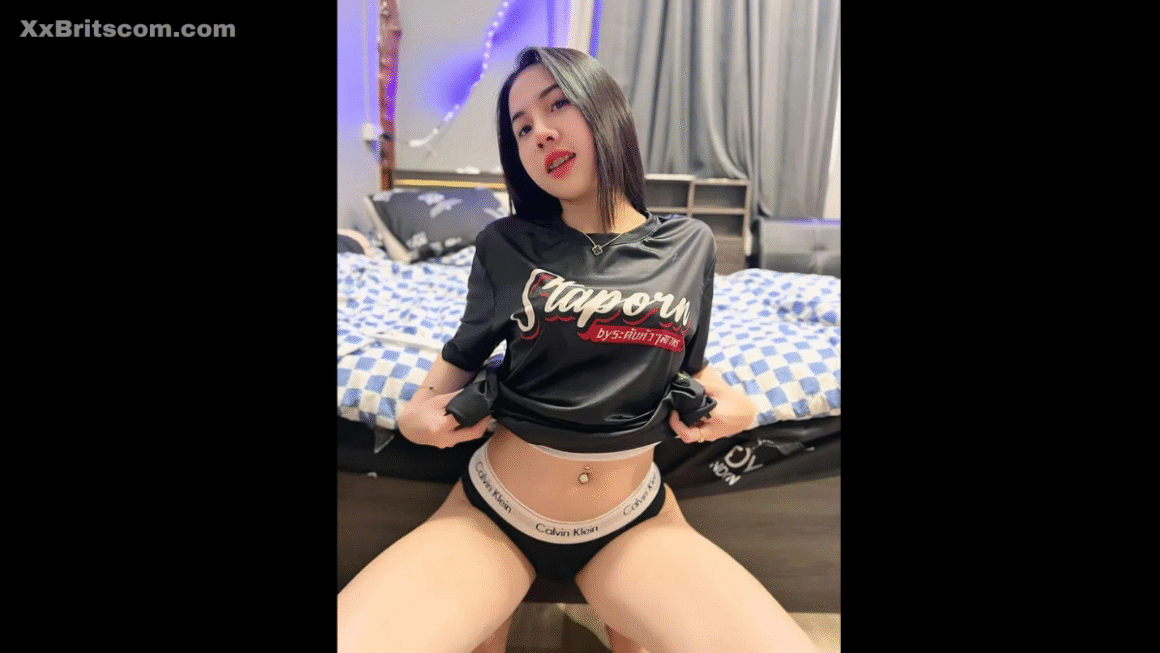Introduction: Who or What is Erothot?
In today’s digital age, the word “Erothot” has become an emerging, polarizing, and intriguing keyword in the online landscape. Whether you’re browsing adult content platforms, scrolling through Twitter (or X), or exploring camming sites, chances are you’ve stumbled upon this term. But what exactly does it mean? Is it a person, a persona, or a cultural phenomenon?
“Erothot” is a portmanteau of “erotic” and “thot”—the latter being a slang term for “That Hoe Over There,” which, although controversial, has been reclaimed by many sex workers and digital creators as a badge of power. The word now typically refers to individuals—mostly women, but not exclusively—who cultivate a sensual, seductive identity online and monetise it through content creation.
This article takes a deep dive into the Erothot identity, its rise in popularity, how it intersects with digital empowerment, the criticism it faces, and the larger implications on modern society and relationships.
The Digital Seductress: Understanding the Erothot Archetype
To understand what makes someone an Erothot, one has to step back and examine the elements of persona creation in the digital world. It’s not just about looking attractive in front of a camera; it’s an entire performance of confidence, charisma, and cunning marketing.
Digital Femininity as a Brand
The Erothot builds her—or his—theatre on a blend of sex appeal and savvy branding. Whether it’s through OnlyFans, Fansly, TikTok, or even Reddit, these individuals know how to command attention. Often, they take on alter-egos or adopt stage names that enhance the fantasy and maintain personal boundaries.
Being an Erothot means more than uploading risqué selfies. It’s about crafting a seductive narrative that appeals to desire while maintaining a certain level of control over the gaze. They tease just enough to make followers come back—and pay—for more.
A Community of Content Creators
What’s remarkable is that “Erothot” no longer refers to a single type of person. It now symbolises a broad category of creators: camgirls, e-girls, NSFW artists, cosplay models, and even erotic ASMR performers. These communities often support one another, cross-promote content, and form collaborations that further enhance their visibility and reach.
They’ve created a robust underground yet mainstream economy that exists parallel to traditional influencer culture—but without the façade of purity. Instead of pretending to be ‘wholesome,’ the Erothot embraces sexuality as a tool, a voice, and an aesthetic.
The Art of Eroticism, Not Porn
Many Erothots don’t even venture into hardcore content. They operate in the grey area of suggestion—lingerie hauls, steamy Q&As, cheeky captions, and point-of-view (POV) videos that rely on imagination rather than graphic detail. This subtle seduction is what sets many apart from mainstream adult performers.
Erothots and the Empowerment Narrative
The conversation surrounding Erothots can’t be separated from wider discussions about feminism, autonomy, and financial independence. Some argue that they are merely perpetuating the male gaze, while others hail them as entrepreneurs redefining their value.
Financial Autonomy
One of the most powerful elements of the Erothot identity is the capacity to earn money independently. Many creators find that turning to erotic content creation offers them an escape from financial instability, especially in economies where traditional work is either scarce or underpaid.
Women, in particular, are finding that platforms like OnlyFans provide not only monetary gain but also control over their schedules, content, and boundaries. Unlike the adult industry of the past, they don’t need to go through gatekeepers. They are the directors, editors, and marketers.
Reclaiming Sexuality
The modern Erothot isn’t just selling images—she’s selling a vibe. This vibe often stems from reclaiming sexual power and turning vulnerability into strength. Many Erothots have found healing and self-love through this process, especially those from conservative or repressive backgrounds.
By owning their sexuality online, they’re flipping the script on shame and objectification. They’re not being ogled; they’re choosing to be seen—and paid for it.
Critics and Their Contradictions
Naturally, critics abound. Some label this kind of work as exploitative, lazy, or morally degrading. But the reality is more complex. Many Erothots are well-read, politically conscious, and articulate about the nuances of their work. They engage in discourse around consent, body positivity, and the ethics of online interaction.
Moreover, it’s hypocritical to consume such content privately while denouncing it publicly—yet that’s a common contradiction in modern society.
The Business of Being Erothot
There’s strategy, branding, and even analytics involved in maintaining a successful Erothot career. This isn’t simply “posting sexy pics.” It’s a full-time business.
Platform Savvy
Whether it’s posting thirst traps on Instagram to funnel followers toward a paid platform or tweeting just the right mix of humour and sensuality, Erothots must know how to work each site’s algorithm. Many even take courses in SEO, digital marketing, and branding to maximise reach.
TikTok, for example, is used to show just enough to intrigue users without getting banned. Reddit is often leveraged to share NSFW previews, while Twitter/X becomes a hub for full freedom of expression.
Subscription Economy
OnlyFans, Fansly, and AVN Stars are more than just platforms—they’re ecosystems. The subscription model allows creators to earn consistent income from loyal fans, and many Erothots use tiered pricing to provide added perks like custom content, private chats, and even “girlfriend experience” interactions.
This model provides a level of stability rare in gig-based economies and is especially appealing to creators who want to escape traditional 9-to-5 employment.
Merch and Spin-Off Ventures
As their brands grow, many Erothots branch out into merchandise—selling everything from posters and signed Polaroids to custom lingerie and body pillows. Some even write ebooks, launch podcasts, or run coaching courses for aspiring adult creators.
The Psychological Landscape of Followers
Understanding Erothots also means understanding their followers. The connection they build isn’t just about lust—it’s emotional, psychological, and deeply personal in many cases.
Parasocial Relationships
A parasocial relationship is when a person feels emotionally attached to someone who doesn’t know them—like a celebrity or, in this case, an Erothot. These connections can become intense, especially when creators offer personalised attention through DMs, voice notes, or video chats.
While many creators set boundaries, others lean into this intimacy, knowing it drives loyalty and revenue. Some even cultivate fan hierarchies where top tippers gain access to special privileges.
The Desire for Connection
Loneliness is a common driver behind the Erothot economy. In a world where dating apps are exhausting and social media interactions feel shallow, paying for a curated experience of closeness can be comforting.
Men—and increasingly, women—pay not just for explicit content, but for attention, affirmation, and the illusion of connection.
The Future of Erothots: Where Do We Go from Here?
Like it or not, the Erothot phenomenon isn’t going away. It’s evolving. With the rise of AI, virtual reality, and deepfake technologies, the lines between human and digital eroticism are beginning to blur.
Tech-Infused Eroticism
Already, AI-generated models are being sold as “virtual Erothots.” They don’t exist in real life but are crafted using cutting-edge design tools. These AI girls can chat, send customised messages, and even produce erotic visuals.
Real-life Erothots may start competing with bots—or integrating tech to enhance their services. The next generation might involve VR meet-ups, voice-based intimacy, or even blockchain-based identities.
Shifting Cultural Norms
As younger generations grow up with sex-positivity and digital transparency, the stigma around erotic content creation might continue to erode. Universities now have courses on digital labour, including adult content. Even mainstream celebrities dabble in the field.
What was once taboo is fast becoming just another hustle—no different than being an influencer or a streamer.
FAQs About Erothot
Q1: Is being an Erothot the same as being a sex worker?
A: In many ways, yes—though not always physical. Most Erothots work in the digital sex industry, offering visual and conversational services online. It’s a form of sex work, but very different from traditional in-person sex work.
Q2: Can men be Erothots too?
A: Absolutely. While the archetype is predominantly female, many men and nonbinary creators have embraced the Erothot identity, challenging gender norms in the process.
Q3: Is it safe to become an Erothot online?
A: Like any online career, it comes with risks—doxxing, stalking, and platform bans. But with proper privacy tools, boundary setting, and community support, many navigate it safely and successfully.
Q4: Do Erothots ever face burnout?
A: Yes, very often. Maintaining an erotic persona can be emotionally and mentally exhausting. That’s why many creators take breaks, hire management, or build diversified incomes.
Q5: Can Erothots have relationships outside their work?
A: Of course. Many are in committed relationships or even married. The key is communication and having partners who understand the nature of the job.
Final Thoughts: A Mirror of Our Times
Erothots are not just erotic entertainers—they’re avatars of a shifting culture. They mirror our desires, anxieties, and contradictions about sex, technology, identity, and autonomy. While the term may carry stigma for some, it also represents a future where sensuality, entrepreneurship, and authenticity can coexist on our screens and in our society.



